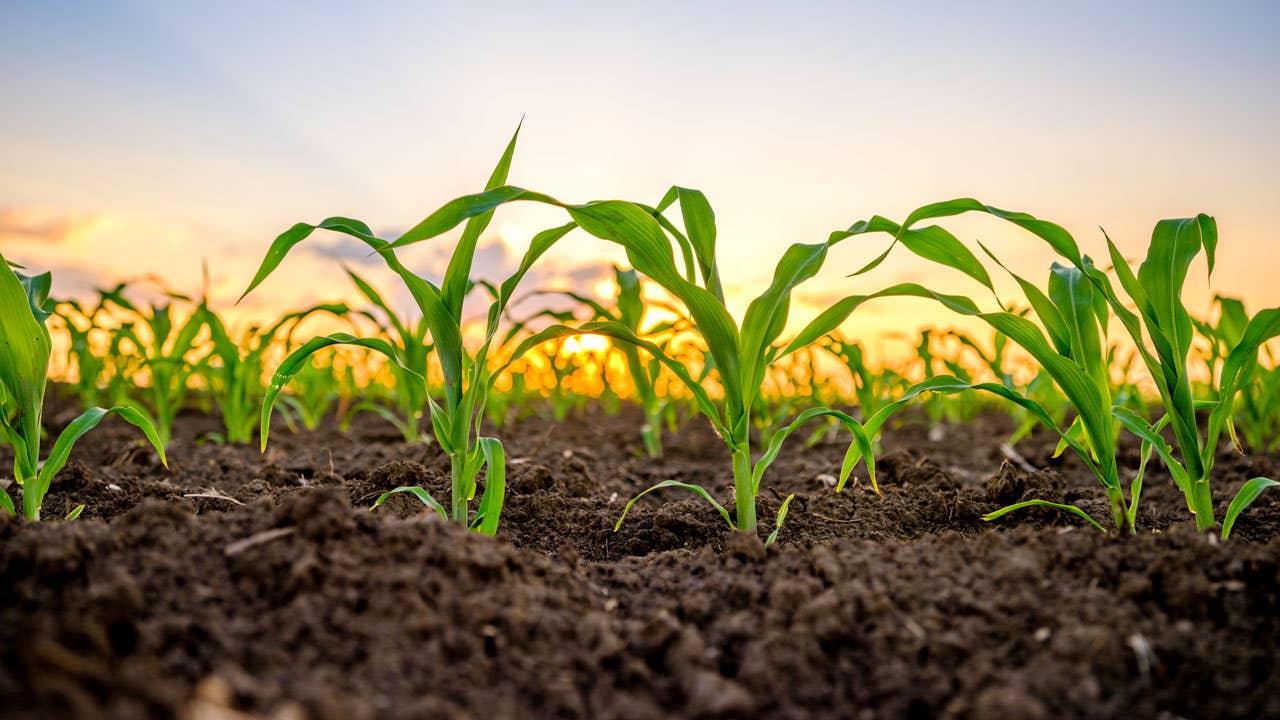Climate-saving super-plants could be the key to reverse climate change, study finds
Burning fossil fuels has increased atmospheric carbon dioxide by over 50 percent compared to two centuries ago

[Sept. 23, 2023: Staff Writer, The Brighter Side of News]
Given the vast amounts of these crops cultivated globally, even a slight boost in their carbon-absorbing capacities could dramatically reduce atmospheric CO2. (CREDIT: Shutterstock)
In the era of climate urgency, where burning fossil fuels has increased atmospheric carbon dioxide by over 50 percent compared to two centuries ago, nature has silently been doing its part to offset human impacts.
Absorbing billions of tons of CO2 annually, plants have served as a natural buffer against the sharp rise in greenhouse gases. But what if we could amplify this ability of plants?
The Promise of Enhanced Photosynthesis
Photosynthesis, the natural process where plants convert sunlight into chemical energy, allows them to take in CO2 and store it in their roots, stems, and trunks. Some scientists believe there's potential to leverage this capability by breeding strains of plants with even enhanced carbon-absorbing abilities.
Plants require light energy, carbon dioxide, water and nutrients. These ingredients come from both the adjacent atmosphere and the soil. (CREDIT: Science Focus)
This fascinating idea is the cornerstone of the work being done by Dr. Wolfgang Busch and his team at the Salk Institute of Biology in San Diego. Through their "Harnessing Plants Initiative" (HPI), they are pioneering research to make crops like wheat, rice, and corn even more efficient at carbon absorption.
The potential implications are enormous. Given the vast amounts of these crops cultivated globally, even a slight boost in their carbon-absorbing capacities could dramatically reduce atmospheric CO2.
Dr. Wolfgang Busch at the Salk Institute of Biology in San Diego. (CREDIT: Salk Institute)
The Momentum Behind the Movement
Over half a decade, under the stewardship of Busch, a renowned plant root biologist, HPI has morphed into a colossal project, encompassing over 85 scientists and garnering collaborations worldwide. It has caught the eye of high-profile benefactors including Amazon's Jeff Bezos, Hess Corporation CEO John Hess, and TED's Audacious Project, bringing in over $135 million in donations.
One might envision a future dominated by genetically modified crops, but Busch’s vision is different. The team is utilizing advanced gene editing tools to discover the ideal combination of genes for maximum carbon absorption. However, once identified, these genes can be introduced into crops via traditional breeding, avoiding the GMO tag and its associated controversies in regions like Europe.
The Science of Carbon Capture
Carbon capture and sequestration are pivotal in the broader strategy to counteract climate change. "To confront the climate crisis," Busch told Newsweek, "we must drastically reduce our CO2 emissions. Simultaneously, we need efficient strategies to draw as much CO2 from the atmosphere as possible."
Related Stories
He elaborated on the power of plants, explaining how they already extract immense CO2 amounts every second. The challenge lies in enhancing plants' ability to transfer more of this carbon to the soil and ensure its prolonged retention.
Busch and his team are currently focused on three key traits related to plant roots: size, depth, and a carbon-rich substance known as suberin or cork. By enhancing these aspects, the team believes they can significantly increase the carbon stored in the soil.
Targeting the Right Plants
Given the dual challenge of climate change and a growing global population, the HPI team chose to work with staple crops – corn, rice, wheat, soybean, canola, and sorghum. This approach doesn't detract from the planet's food production needs and offers the added benefit of improving soil quality.
The HPI team chose to work with staple crops – corn, rice, wheat, soybean, canola, and sorghum. (CREDIT: Creative Commons)
Busch provides a startling statistic: humans release about 37 gigatons of CO2 into the atmosphere yearly. Yet, nature, primarily through plant photosynthesis, removes a staggering 746 gigatons. However, much of this is released back, resulting in a net absorption of about 19 gigatons annually.
Considering the 37 gigatons humans contribute, there's an annual excess of 18 gigatons accumulating in the atmosphere. Busch is optimistic: "If we enhance nature's abilities even slightly, we can effectively tackle this surplus."
A Glimpse into the Future
While there's palpable excitement around the potential of HPI, success hinges on several factors: genetic enhancements that don't compromise crop yield, effective tracking of progress, and global adoption of these improved crops. Tools leveraging AI and deep learning are aiding the team in monitoring root systems, and early collaborations with seed distributors and farmers suggest promising uptake in the future.
Financial incentives are crucial to encourage farmers to adopt these new seeds. (CREDIT: Creative Commons)
Yet, challenges persist. Financial incentives are crucial to encourage farmers to adopt these new seeds. Moreover, carbon markets need to evolve to account for agriculture's potential role in carbon sequestration.
As for a timeline, Busch believes that significant global impacts could be felt within 13 to 15 years, contingent on establishing a viable link between carbon markets and agriculture.
Reflecting on the broader battle against climate change, Busch acknowledges the world will undoubtedly become warmer. However, he remains hopeful: "With collaborative global efforts, we can limit global warming to 1.5 to 2 degrees Celsius. The clock is ticking, but we're not out of time yet."
The resilience and innovation of humanity, combined with nature's inherent ability, could indeed pave the way for a brighter, greener future. But it requires swift, concerted action. As Busch profoundly notes, "It's truly a minute before midnight."
For more science and technology news stories check out our New Discoveries section at The Brighter Side of News.
Note: Materials provided above by The Brighter Side of News. Content may be edited for style and length.
Like these kind of feel good stories? Get the Brighter Side of News' newsletter.



